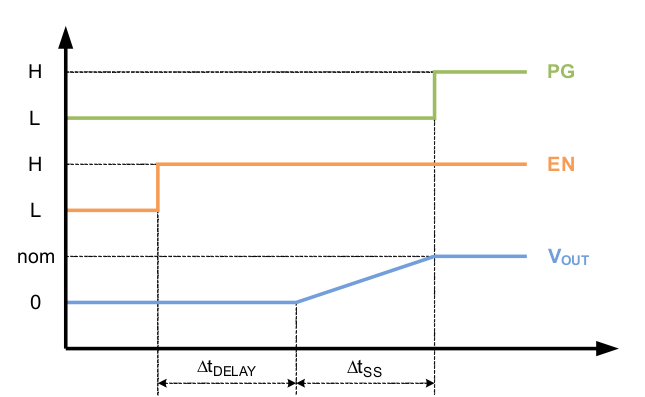SLVSDT1C July 2017 – June 2020 TPSM82480
PRODUCTION DATA.
- 1 Features
- 2 Applications
- 3 Description
- 4 Revision History
- 5 Pin Configuration and Functions
- 6 Specifications
- 7 Detailed Description
- 8 Application and Implementation
- 9 Power Supply Recommendations
- 10Layout
- 11Device and Documentation Support
- 12Mechanical, Packaging, and Orderable Information
Package Options
Mechanical Data (Package|Pins)
- MOP|24
Thermal pad, mechanical data (Package|Pins)
Orderable Information
8.2.2.6 Soft-Start Capacitor Selection
The soft-start ramp time can be set externally connecting a capacitor between the SS/TR and AGND pins. The capacitor value CSS that is needed to get a specific rising time ΔtSS calculates as:
space
Equation 6. 

space
Because the device has an internal delay time ΔtDELAY from EN=High to start switching, the overall startup time is longer as shown in Figure 8.
 Figure 8. Soft-Start Timing (ΔtSS)
Figure 8. Soft-Start Timing (ΔtSS) If very large output capacitances are used (e.g. >4x47µF), the use of a soft-start capacitor is mandatory to avoid current limit foldback during startup (see Current Limit and Short Circuit Protection).